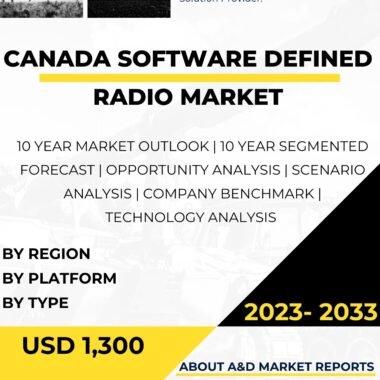Description
United States Network Centric Warfare (NCW) is a modern military concept that leverages advanced communication technologies and information sharing to enhance the effectiveness and efficiency of military operations. NCW aims to create a connected and integrated network of military platforms, sensors, and decision-makers, enabling real-time data sharing, collaborative planning, and rapid decision-making. By maximizing information exchange and coordination, NCW seeks to provide U.S. military forces with a decisive advantage on the battlefield, allowing them to adapt quickly to dynamic and complex threats.
At the heart of Network Centric Warfare is the concept of a network-centric environment, where information and data flow freely across various nodes within the military’s network. This environment fosters shared awareness, allowing commanders and troops to have a common operating picture, enabling them to understand the battlespace better and make well-informed decisions.
The transformational nature of NCW stems from advancements in information technology and communication systems. These developments have enabled the integration of various platforms, such as ships, aircraft, ground vehicles, and sensors, into a seamless network capable of exchanging critical information in real-time.
Through the use of sophisticated sensors, surveillance systems, and intelligence-gathering platforms, NCW enables military forces to collect and share vast amounts of data from different sources. This includes data from satellites, UAVs, reconnaissance aircraft, ground-based radars, and other sensors.
The fusion of this data through sophisticated information processing systems allows for a comprehensive and accurate picture of the battlespace. This shared situational awareness enhances collaboration, enabling different units to work together effectively toward a common objective.
Additionally, NCW enables military commanders to make better-informed decisions rapidly. By having access to real-time intelligence, the command structure can assess threats and opportunities more accurately, allowing them to adjust plans and allocate resources dynamically.
The enhanced ability to disseminate orders and information rapidly to frontline forces allows for increased operational tempo and adaptability. Troops on the ground can respond quickly to changing circumstances, making military operations more agile and effective.
Network Centric Warfare also facilitates the use of precision-guided munitions and smart weaponry. The ability to share targeting data and engage targets with pinpoint accuracy minimizes collateral damage and reduces the risk to civilians and friendly forces.
A significant aspect of NCW is its ability to enable decentralized command and control. By providing a shared understanding of the battlespace, junior leaders can make informed decisions without waiting for instructions from higher-ups. This empowerment allows for a faster and more flexible response to emerging threats.
The U.S. military has implemented Network Centric Warfare principles across various domains, including land, sea, air, and cyberspace. For instance, NCW is integrated into the operations of U.S. Navy Carrier Strike Groups, where ships, submarines, aircraft, and supporting assets form a networked force capable of conducting a wide range of missions.
Similarly, in the U.S. Air Force, NCW is embedded in the operations of its air and space assets. These forces employ advanced sensor networks, data fusion centers, and communication systems to provide real-time information to pilots and decision-makers.
On the ground, Network Centric Warfare principles are employed by the U.S. Army and Marine Corps, where troops are equipped with advanced communication devices and tactical networks. This connectivity enhances their situational awareness and enables them to conduct distributed operations effectively.
The U.S. military’s implementation of NCW is also extended to joint and coalition operations. The ability to share information seamlessly with allied forces enhances interoperability and coordination, allowing for more effective combined operations.
While Network Centric Warfare offers numerous advantages, it is not without challenges. One of the primary concerns is cybersecurity. The reliance on interconnected networks makes military systems vulnerable to cyber-attacks, which could compromise sensitive data and disrupt operations. As a result, the U.S. military places a significant emphasis on ensuring the security and resilience of its networks.
Another challenge is the potential for information overload. With an abundance of data flowing through the network, there is a risk that decision-makers could be overwhelmed by the volume of information. Effective data filtering and prioritization mechanisms are essential to ensure that only relevant and critical data reach the right recipients.
The rapid pace of technological advancements also presents a challenge for the U.S. military’s implementation of NCW. The military must continually adapt and integrate new technologies to maintain its edge in a rapidly evolving battlespace.
Furthermore, the proliferation of NCW capabilities among potential adversaries necessitates a continuous focus on improving and refining U.S. military tactics, techniques, and procedures to retain a competitive advantage.
In conclusion, United States Network Centric Warfare is a transformative military concept that leverages advanced communication technologies to create a connected and integrated network of military platforms, sensors, and decision-makers. By facilitating real-time data sharing, collaborative planning, and rapid decision-making, NCW enhances the effectiveness and efficiency of military operations across all domains. Through shared situational awareness, decentralized command and control, and the use of precision-guided weaponry, NCW provides U.S. military forces with a decisive advantage on the battlefield. While challenges exist, including cybersecurity and information overload, the U.S. military’s commitment to continuous innovation and adaptation ensures that NCW remains a critical enabler of the nation’s military capabilities in an increasingly complex and dynamic security environment.




